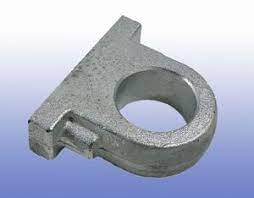Ductile iron, also known as nodular cast iron or spheroidal graphite iron, is a versatile material that has gained widespread use in various industries due to its exceptional mechanical properties, cost-effectiveness, and ease of manufacturing. In this comprehensive guide, we will delve into the world of ductile iron parts, exploring its properties, manufacturing processes, and applications.
Properties of Ductile Iron
Ductile iron possesses a unique set of mechanical and metallurgical properties that make it a preferred choice for many applications:
-
High Strength: Ductile iron offers impressive tensile strength and can withstand heavy loads and pressure, making it suitable for applications requiring durability and structural integrity.
-
Ductility: Unlike its counterpart, gray iron, ductile iron is highly ductile. It can deform under stress without breaking, making it ideal for components subjected to bending or shock loads.
-
Fatigue Resistance: Ductile iron exhibits excellent fatigue resistance, making it suitable for parts that experience cyclic loading, such as crankshafts and gears.
-
Corrosion Resistance: Ductile iron has good corrosion resistance, particularly when coated or alloyed, making it suitable for outdoor and marine applications.
-
Machinability: It is relatively easy to machine and has good wear resistance, making it suitable for parts that require precision machining.
Manufacturing of Ductile Iron Parts
The manufacturing process of ductile iron parts involves several key steps:
-
Melting and Pouring: The process begins with melting scrap iron and adding alloying elements such as magnesium, which promotes the formation of graphite spheres. The molten iron is then poured into molds.
-
Solidification and Cooling: As the iron cools in the mold, the graphite forms nodules within the matrix, giving ductile iron its unique properties. Proper cooling rates are essential to achieve the desired microstructure.
-
Shakeout and Cleaning: After solidification, the castings are removed from the molds and undergo shakeout to remove excess sand. They are then cleaned to prepare for machining.
-
Heat Treatment: Some ductile iron components may require heat treatment to optimize their properties. This process involves controlled heating and cooling to achieve the desired hardness and microstructure.
-
Machining and Finishing: Ductile iron parts are often machined to precise specifications, including drilling, milling, and grinding. This step ensures that the final product meets the required tolerances and surface finish.
-
Quality Control: Throughout the manufacturing process, quality control measures such as non-destructive testing and dimensional inspections are performed to ensure that the parts meet quality standards.
Applications of Ductile Iron Parts
Ductile iron parts find application in a wide range of industries due to their favorable properties:
-
Automotive Industry: Ductile iron is commonly used in engine components, suspension systems, and brake components due to its strength, wear resistance, and damping properties.
-
Water and Sewer Infrastructure: Ductile iron pipes and fittings are widely used for water distribution and sewage systems due to their corrosion resistance and durability.
-
Agriculture: Farm machinery, such as plowshares and tractor components, often incorporate ductile iron parts for their strength and wear resistance.
-
Construction: Ductile iron is used in construction for structural elements like beams, columns, and connectors, where strength and durability are crucial.
-
Oil and Gas Industry: In this industry, ductile iron valves, pumps, and pipeline components are employed due to their resistance to corrosion and high-pressure applications.
-
Railway Industry: Ductile iron is utilized in railway components like wheels, brake systems, and couplings for its excellent wear resistance and high strength.
Conclusion
Ductile iron is a versatile material with exceptional properties that make it an excellent choice for a wide range of applications in various industries. Understanding its properties, manufacturing processes, and applications can help engineers and manufacturers make informed decisions when selecting materials for their projects. Whether it's for automotive, construction, or industrial applications, ductile iron parts play a vital role in modern engineering and infrastructure development.


